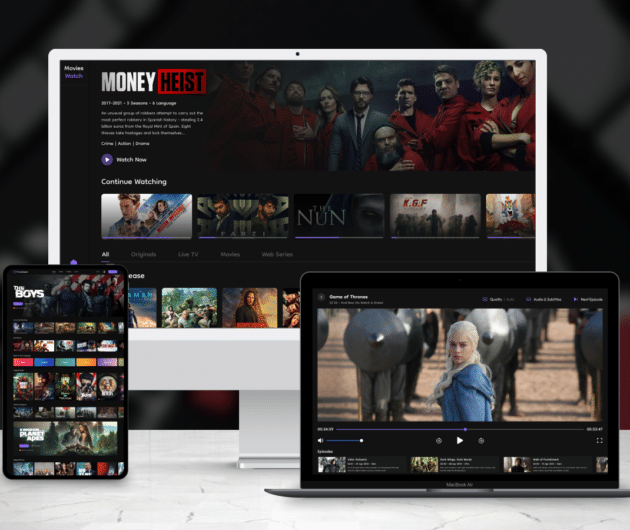Why You Should Consider React Native for Your Mobile App

-
Ankit Patel
- March 10, 2017
- 3 min read
When it comes to mobile app development, we have two important systems – iOS and Android, and to develop apps on these systems, we have many testing tools and libraries such as Swift, Android SDK, Objective C, etc. Application developers manage two codebase on these systems and deliver high-end application quality in these platforms as well as add up new features to the product in a specified time frame. Here we go to understand the world-class features of React Native and how it can decrease the complexity in two codebase and what are the exclusive ways to build mobile applications using React Native in an effective manner.
• Understand first and use it anywhere
You can develop high-end application experiences on iOS and Android platforms using a consistent experience that only JavaScript and React could offer. React Native make the most of JavaScript engine of the mobile and execute JavaScript. Hence, you have to just understand JavaScript and exploit a single and consistent platform to develop in.
• Native look and performance
React Native enables you build real mobile apps that mimics the quality and performance of an app built using Java or Objective C. This single mobile platform uses exact Android and iOS UI aspects and simply put those elements together using React and JavaScript. The only difference is you will find the Javascript code on the backdrop thread of the platform being separated from main thread, ensuring the UI is not blocked. Thus, you can enjoy graceful animations in a highly responsive app platform.
• Quick development
React Native is known for fastest reloading! Hence, you no longer need to wait for Android Studio or Xcode to complete its recompiling. You can simply reload the app quickly or see the changes lively while coding. This mobile platform places Javascript code in one bundle, which is either served from server or collected in our app. Hence, you can also make use of Chrome or Safari developer tools for debugging. React Native has Flexbox CSS styling and inline styling for UI designing that enable the platform to hit the speed for mobile app development.
• Native module
When it comes to some modules in your app for writing platform-specific code using platform-specific API, you can simply do it in this platform by writing ‘native module’. It will bridge the gap between the host platform and JavaScript code. Writing a native module is simple and easy to carry out. Moreover, Facebook has already documented on this.
• Fastest updates
Today, everyone wants their app to be updated with advanced features and bugs fixed quickly. React Native gets its importance in a scenario where iOS take at least two days to finish its review process. Thanks to Apple that allowed React Native to update the app over the air using JavscriptCore. Hence, no need to go through the App store for review process! You can deploy React Native features directly to users using CodePush.
• Reusable
This unique mobile application platform allows developers to share the application logic across the two major systems, meaning 70% of code can be reused between iOS and Android. Facebook has its Ad Manager Application reused 87% of code across two platforms.
• Future of Hybrid mobile app
Hybrid mobile app is the defining moment of user experience and ease of development. It is an app made with technology and wrapped in a contained to be run natively on devices. This framework has come a long way as a bridge between a native app and a web app. And, Facebook’s React Native UI is the leading edge of this advanced technology. With ‘reusable’ native components, building blocks of React Native gather together directly to native. React has excellent counterparts for iOS and Android components, hence you can enjoy a consistent look and feel.
The component based framework enables you to develop apps with a quicker and web-style way but without any web! Thus, you can experience the speed, functionality and look of a native mobile app. Facebook’s this mobile app platform focuses on developing a mobile UI that looks more like a JavaScript library than a platform. React Native UI is highly responsive and flexible thanks to asynchronous Javascript interactions with the native platform. Hence, you can experience faster load times and a smoother feel than a conventional hybrid app.
You May Also Like This:
1. Comparison Between AngularJS And ReactJS Platform
2. AngularJS – Why to Use it?
You may also like

How to Choose the Right Mobile App Development Company
-
Ankit Patel
Imagine this: you’ve got a brilliant app idea that could revolutionize your business, take it to new heights, and transform your entire customer experience. But without the right team to… Read More

How Much Does it Cost to Build a Salon Booking App like Fresha?
-
Ankit Patel
We all have witnessed the buzz in the world of beauty & wellness, and it’s booming every day thanks to the fast-paced and stressful lifestyle. In an era where time… Read More

A Complete Guide to Hotel Booking App Development With Cost
-
Ankit Patel
Whether it’s a corporate business trip or a relaxing vacation with friends, finding the right hotel at the right time and a seamless hotel booking experience is not a luxury… Read More





